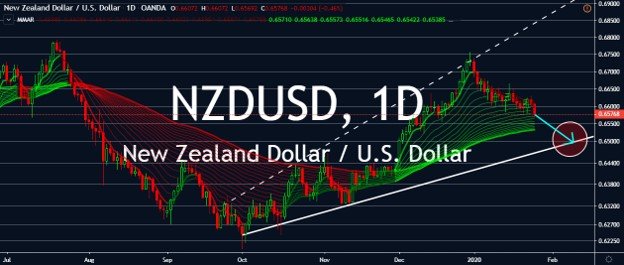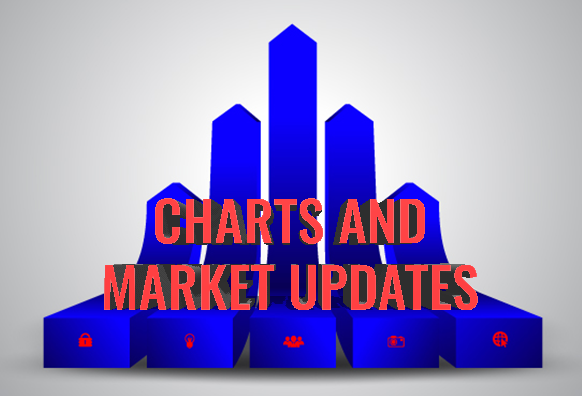Good day traders! Check now the most recent charts and market updates for today’s session. Learn more about analysis and be updated on the current happenings in the market!
AUDCAD
The Australian dollar is expected to drop to levels last seen in October 2019 against the Canadian dollar in sessions. The AUDCAD is on track to reach its support levels by the beginning of February. Ever since the Bank of Canada announced that it would leave its interest rates unmoved late last week, the pair has been on a downward track and the contractions in Australia’s manufacturing and services PMIs are making a lot worse for the Australian dollar. Just recently, the Australian manufacturing PMI showed contraction from 49.2% to 49.1%, however, the result still came in better than the 49.0% projected prior. Meanwhile, the country’s services PMI fell from 49.8% to 48.9%, coming in lower than expectations of 49.5%. On the other hand, the recent Canadian retail sales for November is giving support to bears in sessions. Canada’s retail sales rebounded from -1.1% to 0.9%, coming in hotter than 0.4% forecasts.
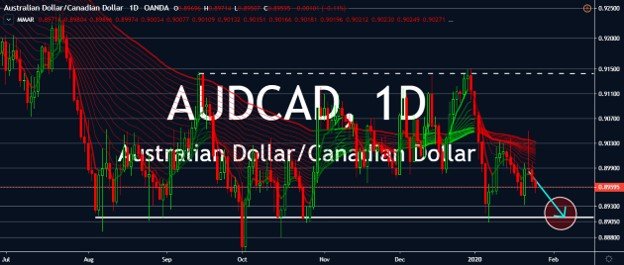
EURGBP
The recent release of the manufacturing, composite, and services PMIs of both Eurozone economies and Britain’s economy is making it even difficult for the EURGBP to take flight. Actually, the pair has been struggling to earn big movements against each other, however, its widely believed that the British pound will slowly and gradually pull the euro lower. Last Friday the German manufacturing PMI for January rose from 43.7% to 45.2%. The German services PMI also rose from 52.9% to 54.2%. However, the eurozone’s January composite PMI remained stagnant at 50.9% and its services PMI contracted to 52.2% from 52.8%. Meanwhile, the United Kingdom’s economy showed great improvements which will, in turn, give the British pound support in the near-term trading. Britain’s composite PMI surged from 49.3% to 52.4%, then its manufacturing PMI rose from 47.5% to 49.8%, and the services PMI hiked from 50.0% to 52.9%.
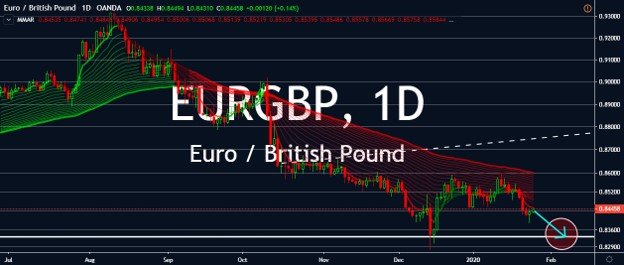
NZDJPY
The Japanese yen continues to rise thanks to the rising threat brought by Wuhan’s coronavirus. China’s deadly SARS-like virus is alarming investors and is raising the safe-haven appeal of the Japanese yen in the market. This means the improvements in New Zealand’s economy won’t be enough to stop the downward run of the NZDJPY pair. Late last week, Statistic New Zealand issued the quarter-over-quarter and year-over-year results of the country’s consumer price index. Wellington’s annual CPI rose from 1.5% to 1.9% in the fourth quarter of 2019, beating forecasts of 1.8%. On the other hand, New Zealand’s quarterly Q4 CPI contracted from 0.7% to 0.5% but still came in better than forecasts of 0.4%. Looking at it, the Japanese economy still pumped good results recently. Japan’s annual national CPI for December rose from 0.5% to 0.7%. And the January Japanese manufacturing PMI rose from 48.4% to 49.3%.
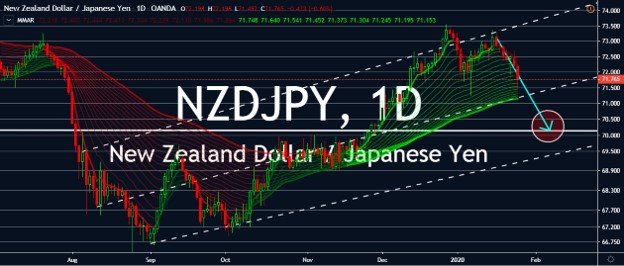
NZDUSD
The kiwi is in trouble against the greenback. The pair is expected to gradually inch downwards and reach its support by the first week of February. After the pair reached its resistance on the latter part of December, bulls have struggled to maintain their gains on the NZDUSD pair. Perhaps the slight improvements in New Zealand’s economy are preventing the US dollar from getting away with a solid run. The strong Markit composite and services PMIs from the United States is reinforcing the buck, making it harder for the New Zealand dollar to prevent the pair from falling further. Just recently, the country’s services PMI showed an improvement, rising from 52.8% to 53.2% in January. While the country’s Markit composite for January rose from 52.7% to 53.1%. Schedules reports due later today have good forecasts and if results actually come through for Washington, the kiwi will need to buckle up for a stronger downward run against the US dollar.
